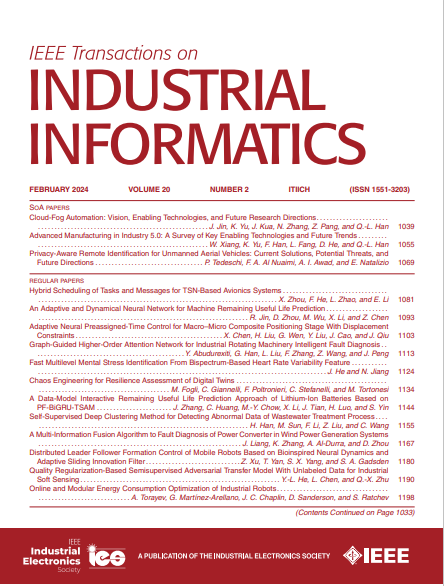基于频率调制连续波 MIMO 雷达的系统生命体征检测框架
IF 9.9
1区 计算机科学
Q1 AUTOMATION & CONTROL SYSTEMS
引用次数: 0
摘要
调频连续波(FMCW)雷达在非接触式生命体征监测领域受到广泛关注。然而,由于生命体征通常非常微弱,很容易被干扰和噪声所掩盖,尤其是心跳信号。为了解决这一挑战,本文提出了一种基于多输入多输出FMCW雷达的新型系统生命体征检测框架。首先,采用最大比值组合法对多通道相位信号进行组合,提高生命体征信号的信噪比;然后,为了抑制噪声和干扰,我们利用奇异谱分析构造生命体征信号,并提出了基于相关性的选择准则来选择呼吸和心跳信号的潜在本征模态函数。最后,采用快速独立分量分析提取呼吸信号,并进一步发展基于二阶导数的快速独立分量分析结合无限脉冲响应陷波滤波器提取心跳信号。仿真和实验结果验证了该框架的有效性。本文章由计算机程序翻译,如有差异,请以英文原文为准。
Systematic Vital Signs Detection Framework Based on Frequency-Modulated Continuous Wave MIMO Radar
The frequency-modulated continuous wave (FMCW) radar has received much attention in the field of noncontact vital signs monitoring. However, since vital signs are usually very weak, it can be easily buried by interference and noise, especially for the heartbeat signal. To tackle this challenge, this article proposes a novel systematic vital signs detection framework using the multiple-input multiple-output FMCW radar. First, the signal noise ratio of the vital signs signal is enhanced by combining the phase signals of multiple channels using the maximum ratio combining method. Then, to suppress noise and interference, we construct the vital signs signal with singular spectral analysis and propose a correlation-based selection criterion to select potential intrinsic mode functions of the respiration and heartbeat signals. Finally, a fast independent component analysis is applied to extract the respiration signal, and the second-order derivative based fast independent component analysis in conjunction with an infinite impulse response notch filter is further developed to extract the heartbeat signal. Simulations and experimental results validate the effectiveness of the proposed framework.
求助全文
通过发布文献求助,成功后即可免费获取论文全文。
去求助
来源期刊

IEEE Transactions on Industrial Informatics
工程技术-工程:工业
CiteScore
24.10
自引率
8.90%
发文量
1202
审稿时长
5.1 months
期刊介绍:
The IEEE Transactions on Industrial Informatics is a multidisciplinary journal dedicated to publishing technical papers that connect theory with practical applications of informatics in industrial settings. It focuses on the utilization of information in intelligent, distributed, and agile industrial automation and control systems. The scope includes topics such as knowledge-based and AI-enhanced automation, intelligent computer control systems, flexible and collaborative manufacturing, industrial informatics in software-defined vehicles and robotics, computer vision, industrial cyber-physical and industrial IoT systems, real-time and networked embedded systems, security in industrial processes, industrial communications, systems interoperability, and human-machine interaction.
 求助内容:
求助内容: 应助结果提醒方式:
应助结果提醒方式:


